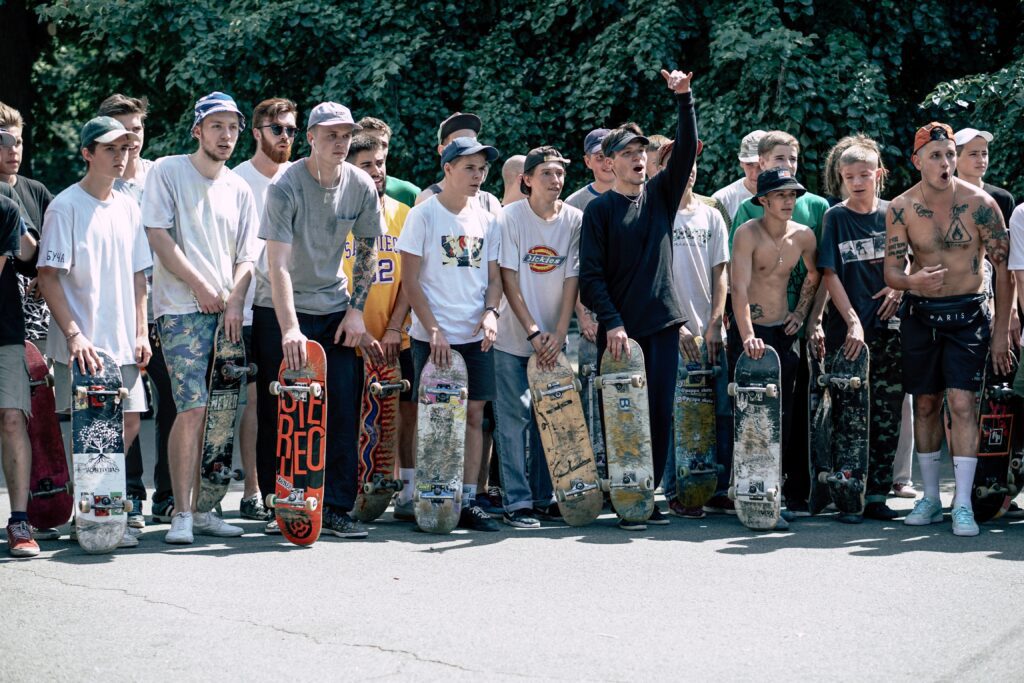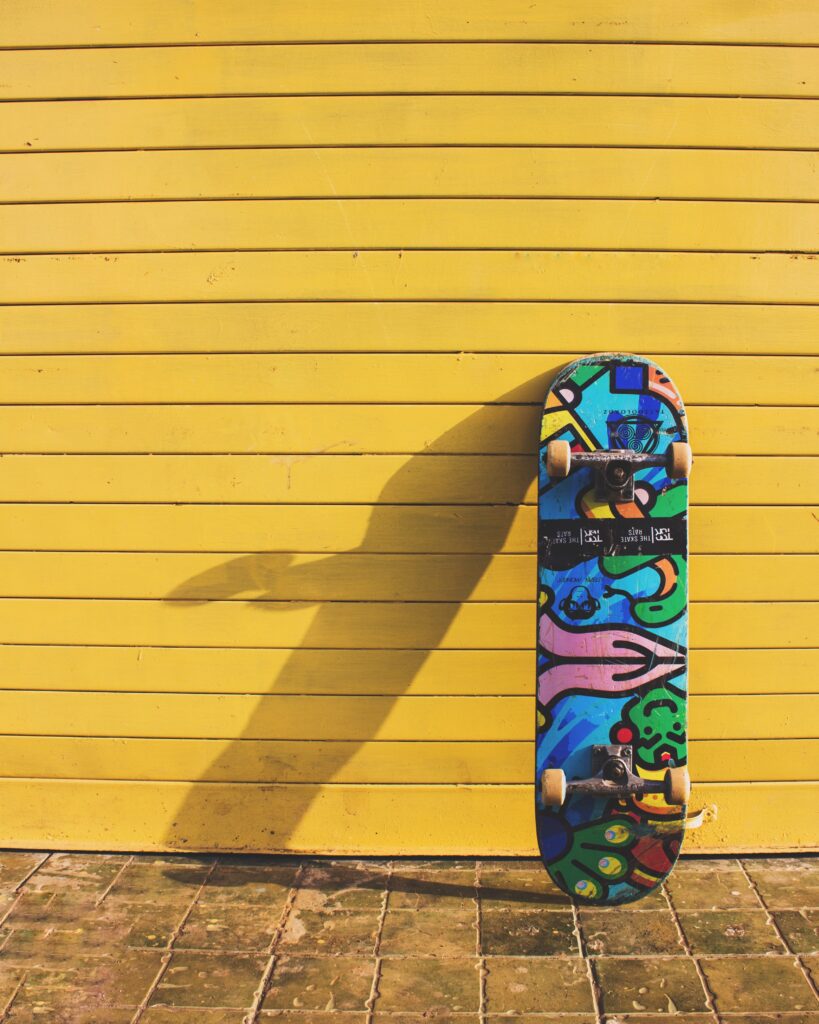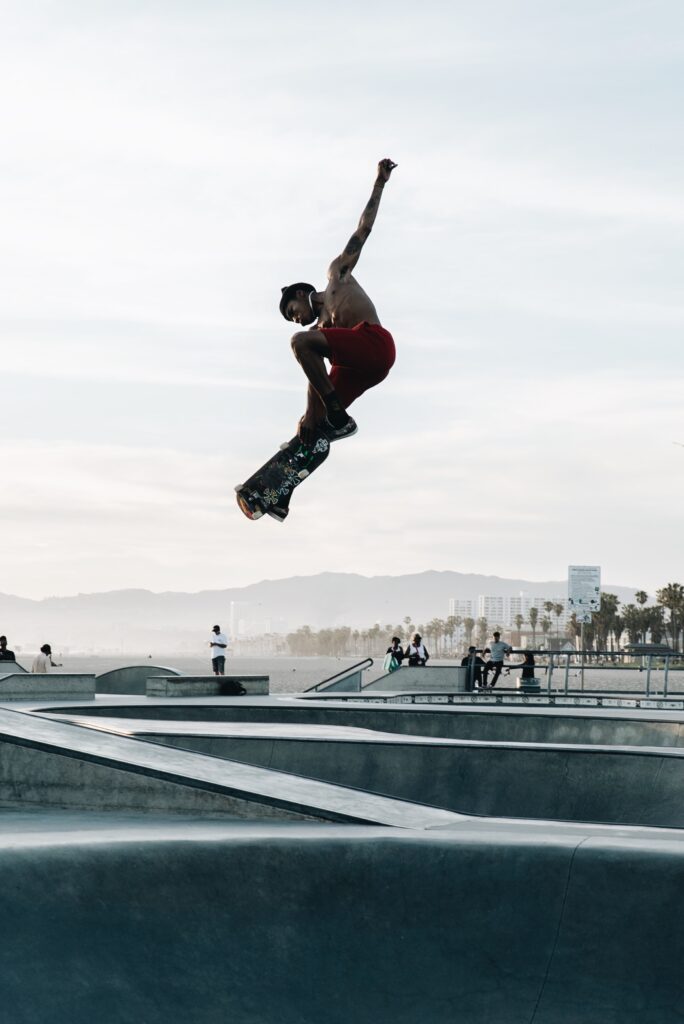So you’ve conquered the ramps and now you’re eyeing the thrilling world of half-pipes, huh? Well, let’s talk about how you can make the transition safely. Progressing from ramps to half-pipes can be an exhilarating yet intimidating experience, but with the right approach, you can take your skills to new heights while keeping yourself out of harm’s way. In this article, we’ll explore some essential tips and techniques that will guide you through the process of safely navigating the transition from ramps to half-pipes. Get ready to take your skateboarding game to the next level!

Choosing the Right Equipment
When it comes to skateboarding, choosing the right equipment is crucial for your safety and success. The first step in this process is selecting a suitable skateboard. Consider the type of skateboarding you want to pursue, whether it’s street skating or ramp skating, as this will determine the size and shape of your skateboard deck. Additionally, pay attention to the trucks and wheels of the skateboard, ensuring they are appropriate for your skill level and the type of terrain you will be riding on.
Equally important is ensuring proper safety gear. Skateboarding can be a high-risk activity, so it’s vital to prioritize your safety. Invest in a good quality helmet to protect your head in case of falls or accidents. Pads for your elbows and knees are also essential, as they offer support and cushioning when you inevitably take spills while learning new tricks. Finally, don’t forget about wrist guards, which provide much-needed protection for your wrists and can prevent serious injuries.
Mastering Basic Skateboarding Skills
Before you can advance to more challenging elements like half-pipes, it’s important to master the basic skills of skateboarding. This includes getting comfortable riding on ramps, which will build your confidence and allow you to develop a solid foundation of control and balance.
Once you feel comfortable riding on ramps, it’s time to move on to practicing basic ramp tricks. Start with simple tricks like ollies and kickturns, gradually progressing to more advanced maneuvers like grabs and flips. Remember to approach each trick with patience and practice, allowing yourself the time to fully grasp the mechanics and technique involved.
Developing balance and control is another essential skill when it comes to skateboarding. Work on maintaining your balance while moving and executing tricks. Balance boards and balance training exercises can be particularly helpful in honing this skill.
Building confidence on skateboards is crucial for your progression as a skater. Believe in yourself, trust your abilities, and embrace the learning process. Remember that falling is inevitable, and it’s all part of the journey. Embrace each fall as an opportunity to learn and grow.
Understanding proper foot placement is often overlooked but plays a significant role in executing tricks and maintaining control on a skateboard. Whether you ride goofy or regular, finding the correct foot placement for each trick is vital. Experiment with different stances and foot positions until you find what feels most comfortable and natural to you.
Transitioning from Ramps to Mini Half-pipes
Once you have mastered the basics of skateboarding and developed a sense of confidence, you may feel ready to tackle mini half-pipes. However, before diving into this transition, there are a few factors to consider.
Finding a suitable mini half-pipe is essential. Look for ones that match your skill level and size preference. Start with a smaller mini half-pipe to get a feel for the terrain and gradually progress to larger ones as you become more comfortable.
Understanding the differences between riding on ramps and mini half-pipes is crucial. Mini half-pipes require a different approach due to their curved shape, which allows you to transition from one side to the other. Familiarize yourself with the dynamics of riding on transitions and learn to read the incline and angle of the mini half-pipe correctly.
Mastering drop-ins is a fundamental skill when riding mini half-pipes. It involves propelling yourself smoothly from the edge of the ramp and entering the transition with control. Start by practicing drop-ins on a smaller ramp before attempting them on a mini half-pipe. Gradually increase your speed and confidence as you become more comfortable with this technique.
Pumping on mini half-pipes is another essential skill to develop. Pumping involves using your body’s momentum to generate speed and maintain flow while riding transitions. Practice pumping by shifting your weight back and forth, using your legs and body movements to propel yourself up and down the mini half-pipe.
As you gain more experience on mini half-pipes, it’s time to learn basic tricks on transitions. Start with simple maneuvers like carving and slashing before progressing to more advanced tricks like rock and roll, axle stalls, and drop-ins on larger ramps. Remember to always prioritize safety and progress at your own pace.
Transitioning from Mini Half-pipes to Larger Half-pipes
If you have successfully conquered mini half-pipes and are ready for a more significant challenge, transitioning to larger half-pipes may be the next step in your skateboarding journey.
Finding a suitable larger half-pipe is crucial for a smooth transition. Look for ramps that match your skill level but offer a bigger and more exhilarating experience. It’s essential to gradually increase the height of half-pipes as you progress, ensuring you are comfortable and confident at each stage.
Mastering more advanced tricks is a natural progression when transitioning to larger half-pipes. As you become more comfortable and familiar with the ramps, challenge yourself with tricks like airs, grabs, grinds, and slides. These tricks will help you push your limits, improve your overall skills, and have a blast while doing so.
Improving flow and speed on half-pipes is a skill that will set you apart as a seasoned skateboarder. Work on finding a smooth and consistent rhythm while transitioning from one side of the half-pipe to the other. Focus on generating speed through pumping, body positioning, and maintaining fluid movements. This will not only enhance your performance but also add an aesthetic quality to your skateboarding style.
Building confidence on bigger ramps is crucial for your progression. Understand that riding larger half-pipes can be intimidating at first, but with practice and determination, you will overcome any fears or doubts. Visualize success, trust your abilities, and stay committed to the learning process.

Safety Tips when Progressing to Half-pipes
As the difficulty level increases when progressing to half-pipes, it’s essential to prioritize safety. Here are some important safety tips to keep in mind:
Wearing proper safety gear is non-negotiable. Always wear a helmet to protect your head in case of falls or accidents. Elbow pads, knee pads, and wrist guards are also essential to prevent injuries and provide support.
Check the half-pipe conditions before your session. Look out for any cracks, bumps, or debris that may pose a risk. If the half-pipe is poorly maintained or compromised, it’s best to avoid using it until it’s in proper condition.
Start slow and take smaller steps when progressing to larger half-pipes. Gradually increase the height and difficulty of the ramps, giving yourself enough time to build the necessary skills and confidence.
Practicing proper falling techniques is crucial to minimize the risk of injury. Learn how to roll out of falls, distribute impact, and protect vulnerable areas of your body. Falling is inevitable in skateboarding, and knowing how to do it safely can make a significant difference.
Always have a spotter or supervision when skating on half-pipes, especially if you’re pushing your limits. Having someone watching over you can provide an extra layer of safety and support.
Understanding Basic Half-pipe Terminology
To fully immerse yourself in the world of skateboarding, it’s essential to understand the basic half-pipe terminology commonly used by skateboarders:
Vert and Transition: Vert refers to the vertical part of a half-pipe or ramp, while transition refers to the curved portion connecting the vert sections.
Coping and Deck: Coping is the metal or plastic edge that lines the top of the ramp, while the deck refers to the flat surface you ride on.
Drop-in and Rollout: Drop-in involves starting a run from the top of the half-pipe by propelling yourself down, while rollout refers to the process of riding to the bottom and exiting the ramp.
Pump and Carve: Pumping entails using your body’s movements to generate speed and momentum on the half-pipe, while carving refers to making smooth turns and arcs on the ramp’s curved surfaces.
Air and Grind: An air is a trick where a skater becomes airborne, while a grind involves sliding or grinding on the edge of the coping or other obstacles present on the ramp.

Learning Advanced Ramp Tricks
As your skills progress and you become more comfortable on half-pipes, it’s time to delve into advanced ramp tricks. Here are some tricks to focus on:
Kickturns and Rock to Fakies: Kickturns invdistinguishesolve turning your skateboard 90 degrees on the coping while still in motion, whereas rock to fakies involve riding up the wall of the half-pipe, stalling, and returning to the same direction you came from.
Axle Stall and Tail Stall: Axle stalls involve stalling with the front truck (axle) on the coping, where the tail of the skateboard hangs down, while tail stalls are performed using the back truck (tail) on the coping, with the nose of the skateboard pointing up.
Smith Grinds and Feeble Grinds: Smith grinds are executed by grinding on the coping with the back truck (tail), while feeble grinds involve grinding on the coping with the front truck (axle).
Blunt Slides and Boardslides: Blunt slides consist of sliding on the tail of the skateboard along the coping, while boardslides involve sliding the entire length of the skateboard on the coping.
Developing Your Own Style
Skateboarding is not just about mastering tricks; it’s also about expressing your individuality and developing your own unique style. Here are some tips to help you develop your personal skateboarding style:
Experiment with different trick combinations to create your own signature moves. Don’t be afraid to think outside the box and mix different tricks together. The possibilities are endless, and by combining tricks, you can truly make them your own.
Finding your preferred stance is crucial in developing your style. Whether you skate regular or goofy, embrace your natural instincts and work with what feels most comfortable to you. Your stance will influence the way you approach tricks and the flow of your overall skateboarding style.
Incorporate personal creativity into your skateboarding. Experiment with different lines, approaches, and variations of existing tricks. Explore new ways to manipulate your skateboard and push the boundaries of what is considered traditional skateboarding.
Developing smooth transitions between tricks is essential for a polished style. Focus on maintaining momentum and flow throughout your runs. Smooth transitions not only highlight your technical skills but also add an effortless and aesthetically pleasing element to your skateboarding.
Joining a Skateboarding Community
Skateboarding is a vibrant and welcoming community, and joining it can greatly enhance your skateboarding experience. Here’s how you can become an active part of the skateboarding community:
Attending local skate parks is an excellent way to connect with other skateboarders and immerse yourself in the skateboarding culture. Be friendly, respectful, and open to meeting new people. Skate parks are not only a place to hone your skills but also a hub for exchanging knowledge, sharing tricks, and supporting fellow skaters.
Participating in skateboarding events, such as competitions or demo sessions, is another way to engage with the community and showcase your skills. These events provide opportunities to meet professionals, learn from experienced skaters, and even challenge yourself in a competitive setting.
Connecting with experienced skaters can be incredibly beneficial in your skateboarding journey. Seek out mentors or role models who can offer guidance, share their knowledge, and provide support as you progress. Built on a foundation of mutual respect and shared passion, these relationships can be instrumental in your development as a skateboarder.
Learn from others by observing and studying their techniques. Pay attention to different styles, tricks, and approaches. Watch skateboarding videos, read magazines, and follow social media accounts of influential skateboarders to stay updated and inspired.
Maintaining Proper Physical Conditioning
Skateboarding is a physically demanding activity that requires strength, flexibility, and overall fitness. Here are some tips to maintain proper physical conditioning as a skateboarder:
Strengthening leg muscles is crucial for balance, stability, and power while skateboarding. Incorporate exercises that target your quads, hamstrings, and calves into your fitness routine. Squats, lunges, and calf raises are excellent exercises for building leg strength.
Improving flexibility and balance will significantly enhance your skateboarding performance. Incorporate stretching exercises into your daily routine to increase your range of motion and prevent injuries. Yoga and Pilates are great practices to improve flexibility, balance, and body control.
Keeping a healthy diet is crucial for fueling your body and maintaining optimal performance on the skateboard. Incorporate a variety of fruits, vegetables, lean proteins, and whole grains into your meals. Stay hydrated by drinking plenty of water throughout the day.
Getting sufficient rest and recovery is often overlooked but essential for skateboarders. Ensure you have adequate sleep to allow your body to recover and repair itself. Listen to your body and take rest days when needed to prevent overtraining and injuries.
By following these tips and incorporating a well-rounded approach to physical conditioning, you’ll be able to stay in top shape and progress as a skateboarder.
In conclusion, safely progressing from ramps to half-pipes in skateboarding requires a combination of proper equipment, mastered skills, understanding of terminology, and a commitment to safety. Take the time to choose the right skateboard and safety gear, and gradually master the basic skills before transitioning to mini half-pipes. As you gain confidence and experience, move on to larger half-pipes while following safety tips and consistently working on improving your skills and style. Joining the skateboarding community, maintaining proper physical conditioning, and embracing the learning process will ensure a fulfilling skateboarding journey filled with growth and enjoyment.
